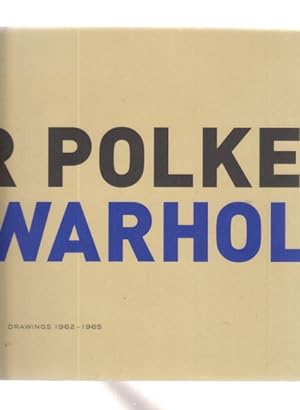mccaffrey fine art ny (3 results)
Product Type
- All Product Types
- Books (3)
- Magazines & Periodicals
- Comics
- Sheet Music
- Art, Prints & Posters
- Photographs
- Maps
-
Manuscripts &
Paper Collectibles
Condition
- All Conditions
- New
- Used
Binding
Collectible Attributes
- First Edition
- Signed
- Dust Jacket
- Seller-Supplied Images (2)
- Not Printed On Demand
Seller Location
Seller Rating
-
Rabo Karabekian / Gary Rough
Published by NY: McCaffrey Fine Art, 2008
Seller: ANARTIST, New York, NY, U.S.A.
Softcover staple-bound exhibition catalog, 40 pages, as new condition; clean and crisp; no internal marks. Gary Rough paints works as if he was a character in a Kurt Vonnegut novel with the author's permission as detailed in the reproduced correspondence.
-
Hitoshi Nomura: Early Works-Sculpture, Photography, Film, Sound
Published by McCaffrey Fine Art, NY, 2010
ISBN 10: 0979048451ISBN 13: 9780979048456
Seller: Kenneth Mallory Bookseller ABAA, Decatur, GA, U.S.A.
Book
Hardcover. Condition: Very good. Hardcover. 87pp. Very good hardback bound in publisher's photographically illustrated boards and issued without a jacket.
-
Sigmar Polke. Andy Warhol. Drawings 1962-1965. (Ausstellung). McCaffrey Fine Art; New York. 2006.
Published by NY: McCaffrey Fine Art, 2006
ISBN 10: 0979048400ISBN 13: 9780979048401
Seller: Fundus-Online GbR Borkert Schwarz Zerfaß, Berlin, Germany
Book
Condition: Gut. Ca. 50 Seiten; farb. Illustrationen; 25,5 cm; kart. Gutes Exemplar; Einband stw. gering berieben. - Englisch. - Texte: Magdalena Dabrowski; Fergus McCaffrey. - . It should be emphasized that the postwar political and economic situation in Germany and America, the vanquished and the victor respectively, could not have been more different. In Germany the "economic miracle" was under way but the effects were yet to come, while America rejoiced in postwar prosperity and abundance. The evolution of the artworks of both Polke and Warhol was strongly conditioned by the observed surrounding world, the prevailing societal attitudes, and the artistic milieu in which each functioned. In 1953 Polke, as a youngster of twelve, moved from what was then East Germany to West Germany. He experienced both deprivation from and desire for the material goods that were just starting to become available. These early memories indelibly remained with him. His "transfer" into Western consumer society influenced his depictions and choice of motifs, be they daily staples such as Stew, Sausages, and Bread Rolls (plates 4,5, and 22) or more "high-end" articles like Shoes and Handbags (plates 11 and 23). With his absurdist humor-had Hair Removal Cream or Shoe Polish (plates 8 and 20) ever before (or since) appeared in the lexicon of art subjects?-and interest in the laws of chance (symbolized by the dice, plate 25), Polke presents his viewer with questionable "objects of desire," depicted in a tongue-in-cheek manner, rather than goods of commercial plenitude and excess. Throughout, one senses the elevation of products of little possible glamour, such as Richter's Multi-purpose Table Circular Saw (plate 16), from "low" to "high" art, accompanied by a simultaneous counter-descent of the glamour of ballroom dancing and pseudo-movie stars for example (plates 13 and 14), all of which become generalized into a prosaic human experience. In the way that Dubuffet and Twombly legitimized the use of graffiti in abstraction, and Pollock, Twombly, and Beuys introduced and permitted the use of "the unconscious" scribble, Polke's crude, strikingly direct drawings won similar permission for artists working in the "figurative" domain. He conjures us the world of open possibilities for interpretation and contemplation. His early drawings puzzle, amuse, and astonish, inviting the viewer to an intellectual discourse and discovery of new visual and interpretive horizons. Warhol's drawings, on the other hand, create a world in which subjects and objects of unequal classical value are appropriated and newly crowned in their banality as the "high art" icons of human aspiration. The directness of the message is enhanced by the exceptional quality of line and straightforward presentation.The artist's voice speaks through its neutrality. Such different conceptual approaches provide an additional dimension to our understanding of the creativity and uniqueness of each artist, while enhancing our discourse with contemporary art. (M. D.) ISBN 9780979048401 Sprache: Deutsch Gewicht in Gramm: 650.




